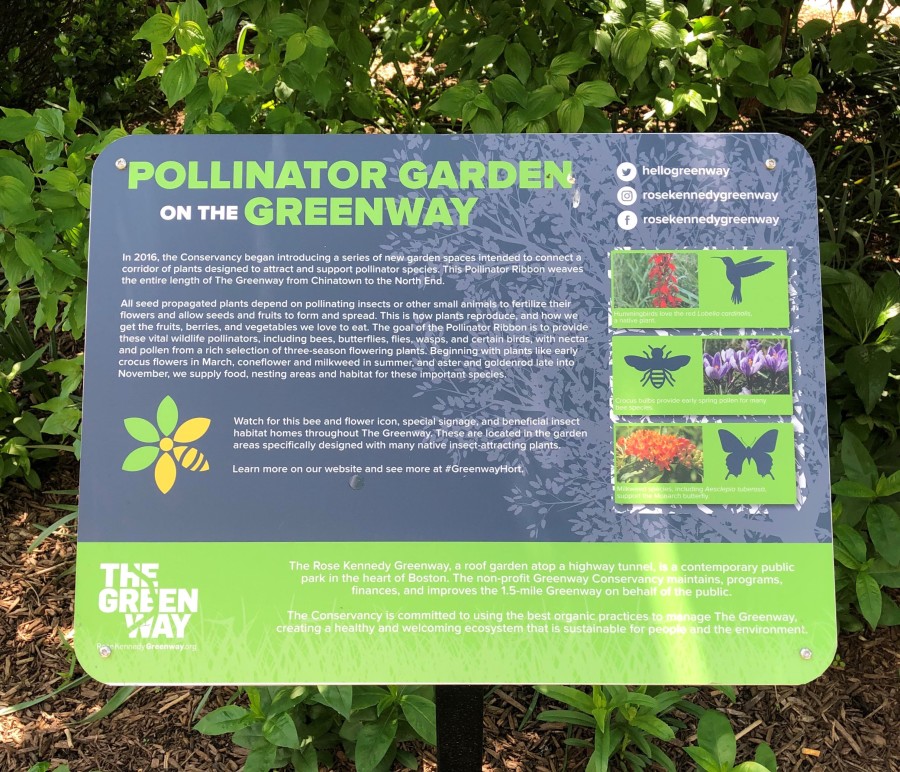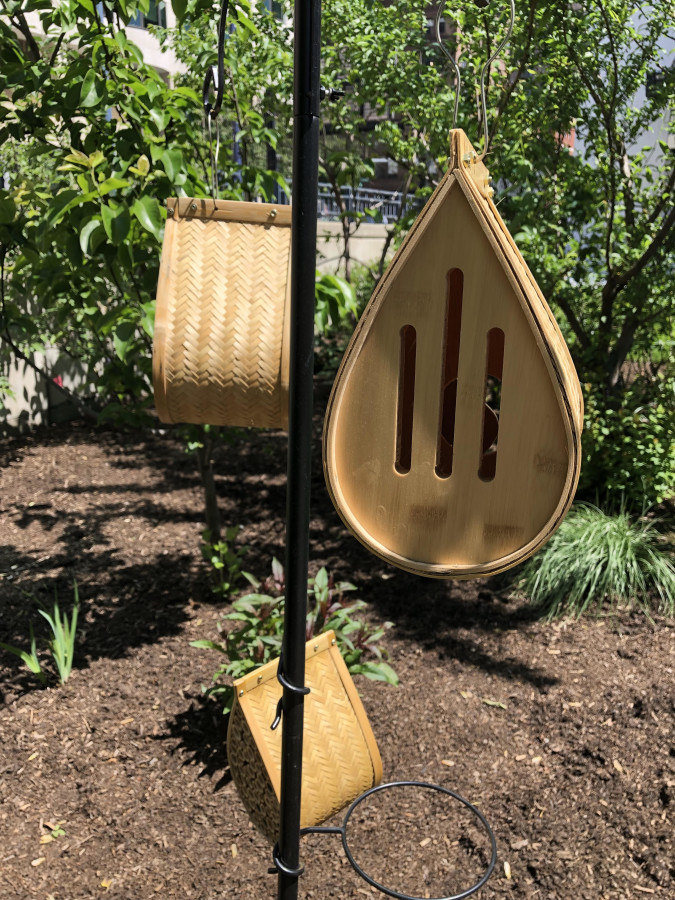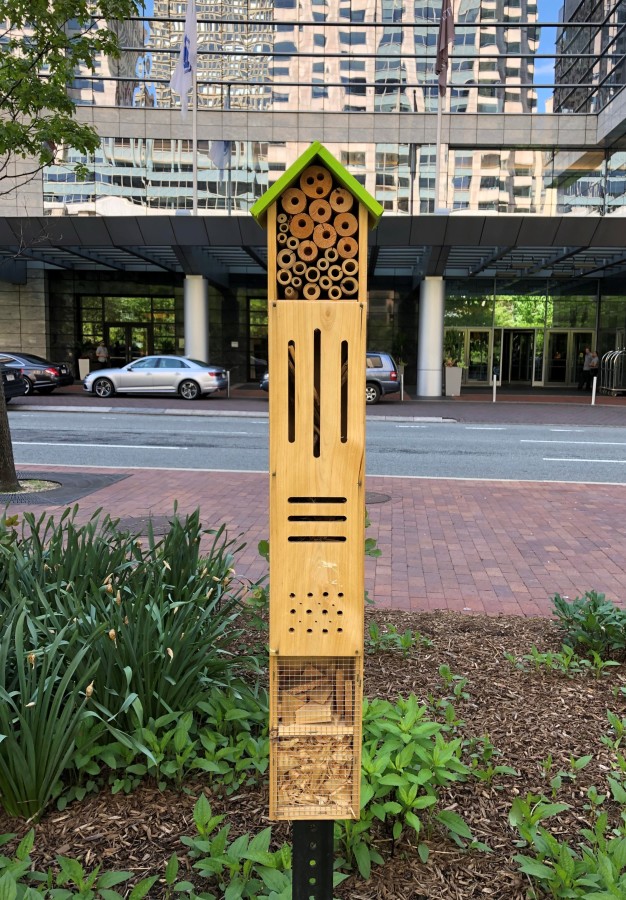Written by Tori Hiney, Plant Health Care Horticulturist
How do we maintain our Pollinator population?
If you missed Part One of this blog or you are unfamiliar with The Greenway, we are an organic park that sits atop the I-93 tunnel. Given our close proximity to the Boston Inner Harbor, we are dedicated to promoting and maintaining a healthy ecosystem. With this comes a great responsibility to understand the needs of organisms as small as our soil microbes all the way up to our largest trees.
For our pollinators this is particularly important because, while some are migratory, a lot of them are homebodies and they’ve chosen us as their permanent residence! While our new pollinator homes are fantastic options for some of our residents, a lot of our other pollinators are ground nesters and they require some thinking outside the box. For these ground nesters, it is extremely important that we be conscientious of how we care for and maintain The Greenway.
The bumble bee is a great example of how fragile this process can become as only the queen bumble bee takes on the task of overwintering; the queen alone carries the weight of her colony’s survival. Her first obstacle is simply making it through the winter. This becomes impossible if the ground is stripped of all debris or has no mulch. Her second obstacle is finding food, typically last year’s brush and leaves, to forage on in the spring. If the beds are cleaned up too meticulously and no beneficial material is left behind, she likely will not survive, and with her goes her colony and eventually the fade out of our “buzz” pollinated plants. To bee sure, here at The Greenway we try to leave the majority of perennials up over the winter and perform light cleanups in the spring before mulching, often with just the use of rakes and helpful hands. It’s quicker than you think, and you can go ahead and ditch that gym membership, so everybuzzy wins! As a result of our cleanup methods, we have seen our population of bumble bees and many other ground nesters keep going up and up!

Pollinator Homes
Now with all of that said, who would we bee if we didn’t provide our winged friends with some housing options? Here are some more details on the pollinator homes installed earlier this season.
First up is what I’ll refer to as the Bamboo Bungalows. I like to think of these as little hostels… affordable downtown living! There are three of these Bungalows spread across The Greenway, each consisting of three separate hanging huts and two baths suspended from a shepherd’s hook. Each of these huts caters to a different beneficial insect. In this grouping, you can expect to see Mason bees, several species of butterflies, and perhaps some of our common songbirds making themselves at home.
 The other type of beneficial shelter we’ve introduced is more of a hotel than a hostel, so I like to refer to these as the Hummble Hotels, there are eight of them spread throughout The Greenway. Each Hummble Hotel is able to house four to five different species spread across 6 “floors”. This cozy oasis will allow species of butterflies, solitary bees, ladybugs, and lacewings to find safety and comfort away from the elements and wild city streets!
The other type of beneficial shelter we’ve introduced is more of a hotel than a hostel, so I like to refer to these as the Hummble Hotels, there are eight of them spread throughout The Greenway. Each Hummble Hotel is able to house four to five different species spread across 6 “floors”. This cozy oasis will allow species of butterflies, solitary bees, ladybugs, and lacewings to find safety and comfort away from the elements and wild city streets!
Planting for beneficial insects, wildlife, and pollinators is what it’s all about. Caring for the landscape in an organic, responsible way is how we can all make a difference. So please join us; the pollinator party has just begun and it is un-bee-lievable!




